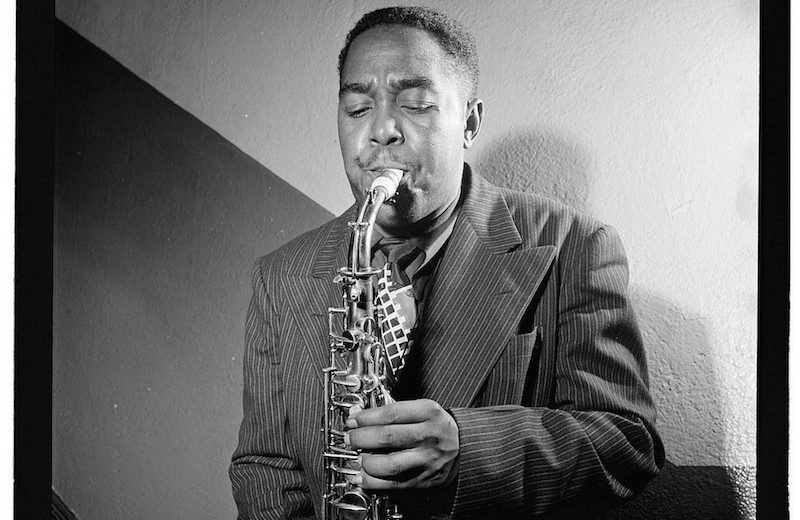
Bring it Home – Make Music Personal!
 Well, it has been four years in the making, but I’m finally feeling good about the connections that I’m creating for students when I talk about Charlie Parker. I’ve always taught them something about Parker or at least tried to bring up his name, but since his birthday comes so quickly at the beginning of the school year it sometimes happens that I get caught up in the hustle and bustle and don’t say much except “Oh yeah, Charlie Parker was…”
Well, it has been four years in the making, but I’m finally feeling good about the connections that I’m creating for students when I talk about Charlie Parker. I’ve always taught them something about Parker or at least tried to bring up his name, but since his birthday comes so quickly at the beginning of the school year it sometimes happens that I get caught up in the hustle and bustle and don’t say much except “Oh yeah, Charlie Parker was…”
This week though, I feel like our talk about Parker was really great and we made some fantastic connections. So let me back up and tell you a little context about Parker and why he matters to us!
Who was Charlie Parker?
Charlie Parker was a jazz musician, acclaimed saxophone soloist, and leading figure in the development of bebop. You might recognize him from your college Music History/Music Listening courses. His virtuosic solos were often referenced to demonstrate his style of playing really complex melodic lines and combining jazz with other musical forms like blues, Latin, or even classical. Parker was highly influential in the jazz world and played with so many musical giants of his age. His friendship with them and the connections he made helped to influence his musical career and open avenues for exploration.
A specifically important relationship was the one he had with Dizzie Gillespie. They became good friends and when Parker died, the funeral arrangements were payed for by Gillespie. Not only was he a great musician, but he was an icon for the hipster and later Beat generation because he was an artist and an intellectual, not just an entertainer.
Personal Significance – Why Does This Matter?
So, why does Charlie Parker matter to me and my students? Well, Parker was born in the city where I teach: Kansas City, Kansas. That fact alone should mean that we devote time and effort to retelling his story and teaching kids about his legacy. But I think that teaching kids about Charlie Parker is more than just “he lived around here,” but more of a “look at what someone from our neighborhood accomplished because they believed.” The school where I teach is in the urban core of Kansas City, Kansas and our Free and Reduced lunch rate (at last report) is up to 94%. Needless to say, in my district the teachers strive to give our students the best possible experience, but we realize and understand that our kids battle all the issues that go along with poverty and living as English Language Learners in a new country.
Charlie Parker gives me a way to talk with my students about hope, perseverance, and hard work. Kansas City was a home for jazz in the early part of the 1900s and Parker used his time here as a springboard to great things. Certainly there are hardships and things that I can’t really relate about the life of a jazzer with young ears (Parker battled substance abuse and had some relationship problems), but just talking about his fame and influence on the development of a genre is a big deal.
Talking about his humble beginnings and the amazing things that he did despite those circumstances is also important. I want my kids to walk out of my room believing not only that they are empowered, smart, and loved, but I also want them walking out thinking that music is transformative and can change their lives if they keep learning and working at it. Charlie Parker was a great example of that and is a figure that they can look to and take encouragement from.
Content Connections – In and out of the Music Room
 Teaching students about Parker has evolved through the years that I’ve taught here and I think that this year we did a pretty great job of talking about Parker and his life. Here are just some of the things that we did this week.
Teaching students about Parker has evolved through the years that I’ve taught here and I think that this year we did a pretty great job of talking about Parker and his life. Here are just some of the things that we did this week.
First of all, the students interest is piqued when they walk in the door and see a saxophone suspended in mid air next to a picture of Parker (see above). We sit down and talk about his birthday, his legacy, his influence on bebop, and his skill at playing the instrument. Once I’ve laid out how important of a figure he was in the development of modern music I tell them that best part. “And we’re not just celebrating because he was such an amazing and important musician and his birthday is today. We’re celebrating because he came from OUR CITY! He was from Kansas City, Kansas. Not Kansas City, Missouri. Not Olathe. Not Bonner Springs. He was from Kansas City, Kansas!” And their little eyes light up!
I then go on and talk about how he started in KCK and moved on to New York and other places around the country. At this point in the spiel I even had a first grader who said that her mom works near a house with a sign out front that said “Home of Charlie Parker,” and she had always wondered what it meant. We chat about it, we sometimes listen to music clips, and then I answer questions (and there are usually a lot!). I also take this moment to talk with my third graders about the saxophone and we figure out which instrument family it belongs to and why, something that syncs up perfectly with our current content.
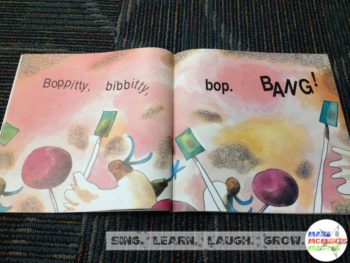 This year I emailed all the teachers in my building to tell them about Parker’s birthday and how we would be celebrating in the music room. I happened to have a few copies of “Charlie Parker Played Be Bop” by Christopher Raschka which I loaned out to classroom teachers to explore with kids if they wanted. The book is really great and uses onomatopoeia and really descriptive language to tell the story of Parker. It’s billed as being good for Pre-K and K (probably because there aren’t a lot of words) but I think that if you read and work through it as poetry or talk about the descriptive language you could probably use it at any grade level. You could probably even add instruments and make this into a really fun sound story!
This year I emailed all the teachers in my building to tell them about Parker’s birthday and how we would be celebrating in the music room. I happened to have a few copies of “Charlie Parker Played Be Bop” by Christopher Raschka which I loaned out to classroom teachers to explore with kids if they wanted. The book is really great and uses onomatopoeia and really descriptive language to tell the story of Parker. It’s billed as being good for Pre-K and K (probably because there aren’t a lot of words) but I think that if you read and work through it as poetry or talk about the descriptive language you could probably use it at any grade level. You could probably even add instruments and make this into a really fun sound story!
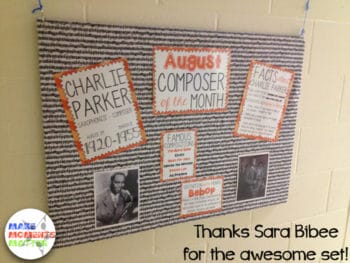 I had several teachers come and borrow the book and it was exciting to see the connections that their kids made. This was an especially exciting opportunity because this year we’ve all been encouraged to see how Social Studies standards connect with our content (and isn’t this a PERFECT connection?). Big themes from SS include “Then and Now,” “Communities,” “Kansas and US regions” and several more. A composer from our region who helped develop a musical genre should be able to fit right in and make a connection with this place the development of a community over time.
I had several teachers come and borrow the book and it was exciting to see the connections that their kids made. This was an especially exciting opportunity because this year we’ve all been encouraged to see how Social Studies standards connect with our content (and isn’t this a PERFECT connection?). Big themes from SS include “Then and Now,” “Communities,” “Kansas and US regions” and several more. A composer from our region who helped develop a musical genre should be able to fit right in and make a connection with this place the development of a community over time.
Classroom teachers took advantage of this connection and I was especially excited about the success stories that our Speech Language teacher told me about what happened in her room. Students were listening to be bop, reading the book, and using Parker and be bop as writing prompts and connection points in their own personal writing. How cool! All in all, the students left knowing about a composer/performer from our area who made a big impact on the world of music. More than that, they learned about someone who came from circumstances just like theirs who went on to do great things!



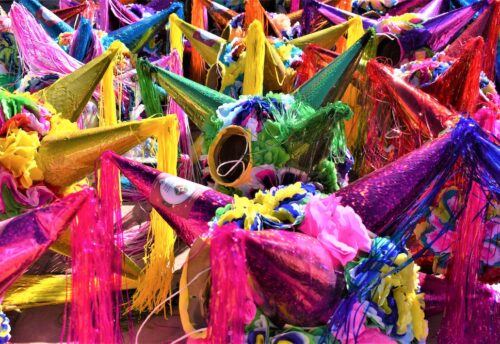
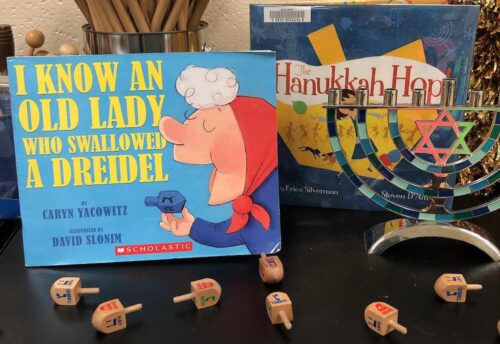
3 Comments